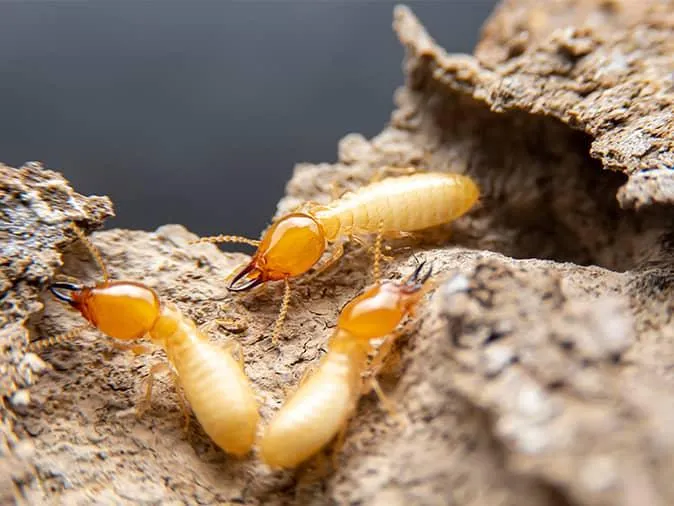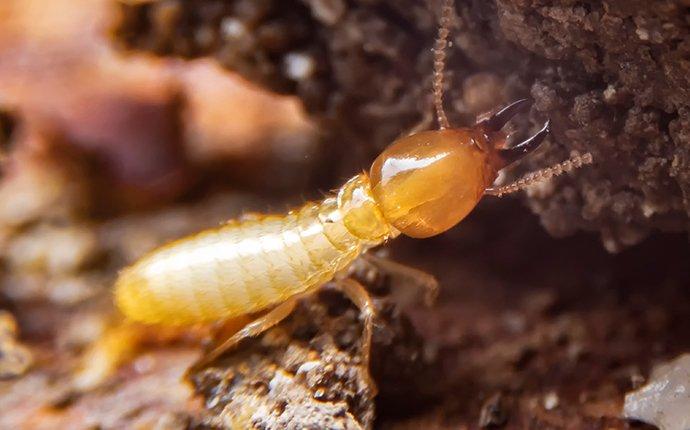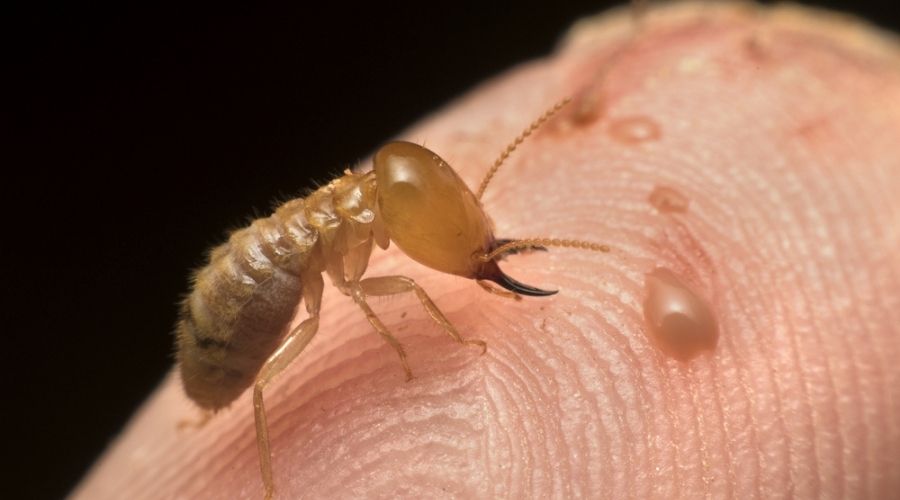Yes, termites are dangerous because they can cause extensive damage to wooden structures, potentially compromising the structural integrity of homes and buildings. However, they do not pose direct health risks to humans.
However, here’re some causes that make termites dangerous for your infrastructure.
- Termites are dangerous because they can silently and extensively damage structures.
- They weaken wooden foundations, leading to costly repairs.
- Their presence often goes unnoticed until significant damage occurs.
- Termites can undermine the safety and value of homes.
- Treating termite infestations can be expensive and time-consuming.
- Preventing termite damage is crucial for property maintenance.
If you want to learn the danger of termites in-depth, keep reading on.
Understanding the Impact of Termites

When it comes to termites, it’s crucial to understand the potential dangers they pose. In this exploration, let me delve into the destructive nature of termites and shed light on their significant economic impact on property owners like yourself.
A. Explaining the Destructive Nature of Termites:
Termites, often called “silent destroyers,” are indeed dangerous. Here’s why:
Wood Devourers: Termites have an insatiable appetite for Wood and cellulose-based materials. They tunnel through the structural components of your home, weakening them over time.
Hidden Invaders: Termites typically operate out of sight, making it hard to detect an infestation until significant damage has occurred. They often go unnoticed until the damage is severe.
Rapid Reproduction: Termites reproduce quickly. A single termite colony can contain hundreds of thousands or even millions of termites, intensifying their destructive potential.
Costly Repairs: Repairing termite damage can be expensive, especially when it affects load-bearing structures. The longer an infestation goes untreated, the higher the repair costs.
B. the Economic Impact on Property Owners:
Termites don’t just damage your home; they also have a substantial economic impact:
Property Value Decrease: Termites can reduce the value of your property significantly. Prospective buyers are often wary of homes with a history of termite infestations.
Repair Costs: As mentioned earlier, repairing termite damage can be costly. Property owners may need to spend thousands of dollars on structural repairs and pest control treatments.
Insurance Coverage: Most standard homeowner’s insurance policies do not cover termite damage. Property owners are left to bear the financial burden themselves.
Ongoing Maintenance: Preventing termite infestations requires ongoing maintenance and vigilance, adding to the long-term costs of property ownership.
In conclusion, termites are indeed dangerous due to their destructive nature and the significant economic impact they can have on property owners.
Health Risks Posed by Termites
When it comes to termites, their dangers go beyond property damage. In this section, let’s look at the potential health risks associated with termites, focusing on allergies and respiratory issues caused by termite infestations.
A. The potential Health Hazards Associated with Termites:
Termites may seem harmless, but they can pose health risks in various ways:
Termite Bites: While rare, termites can bite humans. These bites can cause skin irritation and, in some cases, lead to allergic reactions.
Allergenic Substances: Termites produce allergenic proteins in their saliva, feces, and exoskeletons. When these substances become airborne, they can trigger allergies in sensitive individuals.
B. Allergies and Respiratory Issues Caused by Termite Infestations:
Allergic Reactions: People near termites might sneeze, itch, and have a runny nose or watery eyes due to allergens. These reactions can be uncomfortable for those with allergies and affect daily life.
Respiratory Problems: Inhaling termite allergens can worsen pre-existing respiratory conditions like asthma. It may lead to coughing, wheezing, chest tightness, and even asthma attacks.
Vulnerable Groups: Kids and older adults who have weak immune systems are more vulnerable to potential health problems from termites.
Mitigation: To reduce health risks, it’s essential to address termite infestations promptly. Proper pest control measures and regular inspections can help minimize exposure to allergenic termite materials.
Termites aren’t just a threat to your property; they can also jeopardize your health. Understanding the potential health hazards associated with termites is vital for taking necessary precautions and seeking professional help when needed.
Property Damage and Structural Compromises
When it comes to termites, their destructive potential goes far beyond what meets the eye.
Through this section, let’s dive into the depth of property damage and structural compromises that termites can inflict on your surroundings, including homes, furniture, and other valuable assets.
A. Detailing the Extensive Damage Termites Can Cause to Structures:
Termites are relentless in their quest for cellulose-based materials, which include Wood, paper, and even some fabrics. Here’s how they can wreak havoc on your structures:
Structural Weakening: Termites can tunnel through wooden beams, flooring, and support structures, causing them to weaken and lose their load-bearing capacity. This compromises the integrity of your home.
Hidden Destruction: Termites often work out of sight, making it challenging to detect their presence until substantial damage has already occurred. This hidden destruction can be severe and costly to repair.
Gradual Erosion: Over time, termite damage can accumulate, slowly eroding the strength of your home’s foundation and framework. It can result in expensive fixes and, in severe situations, building damage.
B. the Potential Threats to Homes, Furniture, and Other Valuable Assets:
Home Damage: Termites are known to target wooden elements in your home, such as walls, ceilings, floors, and even cabinets. Their continuous feeding can render these structures unsound.
Furniture and Belongings: Termites don’t discriminate; they can damage wooden furniture, antiques, and personal belongings. Valuable items can be ruined if not protected.
Financial Consequences: The financial implications of termite damage are substantial. Repairing structural damage and replacing damaged property can lead to significant expenses.
Prevention: Regular inspections and preventative measures are crucial to safeguarding your property and valuable assets from termite infestations.
Conclusion: Termites are, without a doubt, dangerous when it comes to property damage and structural compromises.
Identifying Early Signs of a Termite Infestation
To protect your property effectively, it’s crucial to identify termite infestations early. In this section, I’ll take you into the importance of proactive termite detection and educate you on common signs that can indicate the presence of these destructive insects.
A. the Importance of Proactive Termite Detection:
Proactive termite detection is key to minimizing damage and associated costs. Here’s why it’s essential:
Early Intervention: Detecting termites in their early stages allows for swift action, reducing the extent of damage they can cause to your property.
Cost Savings: Prompt treatment is generally less expensive than extensive repairs needed after termites have already done significant damage.
Protecting Your Investments: By identifying infestations early, you can safeguard your home, furniture, and assets from potential destruction.
B. Common Signs Indicating Termite Presence:
Mud Tubes: Termites build mud tubes along walls and foundations to protect themselves from the environment. If you spot these narrow, earth-colored tubes, it’s a red flag.
Discarded Wings: Flying termites, or “swarmers,” shed their wings after mating. Finding discarded wings indoors may indicate a nearby termite colony.
Wood Damage: Look for Wood that sounds hollow or damaged. Termites eat the inside of Wood, leaving a fragile outer layer that can be easily punctured.
Frass: Termite droppings, called frass, resemble tiny pellets. Finding piles of frass near wooden structures or on windowsills is a sign of termite activity.
Noisy Walls: It could be termites if you hear faint clicking or rustling within your walls. They are noisy eaters and can be heard when feeding.
Sagging Floors or Ceilings: Severe termite damage can cause floors or ceilings to sag, indicating structural compromise.
Cracked Paint or Drywall: Termites can cause paint or drywall to bubble, crack, or blister as they tunnel through the Wood beneath.
Prevention and Control Measures

To protect your property effectively, knowing how to prevent and control termite infestations is vital. In this section, I’ll share practical tips, effective methods, and numerical information to help you keep termites at bay.
A. Tips and Strategies to Prevent Termite Infestations:
Maintain Proper Ventilation: Make sure crawl spaces and attics have ventilation. Aim for 1 square foot of vent opening for every 150 square feet of crawl space.
Eliminate Moisture Sources: Repair water leaks quickly. A dripping faucet can waste almost 20 gallons of water every day. Repairing leaks not only conserves water but also reduces moisture that attracts termites.
Keep Wood Away from Soil: Create a gap of at least 18 inches between soil and wooden structures. Use concrete or metal barriers to prevent direct contact.
Regular Inspections: A study found that termites cost about $5 billion in damages each year in the United States. Schedule professional termite inspections yearly and be vigilant for signs like mud tubes and damaged Wood.
Landscaping: Maintain a clear zone of about 2 feet around your foundation, free from shrubs or trees. This minimizes potential termite access points.
Mulch Caution: If using mulch, keep it at least 12 inches away from the foundation. Opt for termite-resistant mulch varieties if available.
Seal Entry Points: Seal cracks, gaps, and crevices in your home’s structure, as termites can enter through even tiny openings.
B. Effective Methods of Termite Eradication and Control:
Chemical Treatments: Professional pest control companies apply liquid termiticides, costing approximately $3 to $16 per linear foot. Bait systems cost between $8 to $12 per linear foot. These methods create barriers or attract termites to poisoned baits.
Fumigation: In cases of severe infestations, fumigation using specialized gases can cost from $1,200 to $2,500 for an average-sized home, effectively eliminating termites.
Wood Treatments: Termite-resistant Wood or Wood treated with chemicals like borate costs slightly more upfront but offers long-term protection.
Nematodes: Beneficial nematodes, available for around $25 to $40 per 5 million, can be applied to the soil to attack termite larvae and adults.
Heat Treatment: Heat treatments, costing approximately $1,200 to $4,000, raise the temperature within infested areas to kill termites effectively.
DIY Prevention: Termite-resistant paints and borate-treated Wood are cost-effective options. Monitoring stations can cost around $50 to $200 and provide early detection.
FAQs
Are termites dangerous to my home?
Yes, termites are dangerous to your home as they can cause severe and costly structural damage by feeding on wood and cellulose materials.
Can termites pose health risks to humans?
No, How can I stop termites from getting into my house?
Do termites bite or harm humans?
No, termites do not bite or harm humans. They are primarily interested in consuming cellulose-based materials like Wood and do not have a direct impact on human health.
Can termites damage furniture and belongings?
Yes, termites can damage furniture and other wooden belongings. If these items are made of Wood or contain cellulose, they are at risk of termite infestation and damage.
Do termites infest all types of Wood equally?
No, termites do not infest to all types of Wood equally; they tend to prefer softer woods like pine and cedar but will consume and damage hardwoods if no other food source is available.
How can I tell if I have a termite infestation?
Common signs of a termite infestation include discarded wings, mud tubes on walls or foundations, hollow-sounding Wood, and visible damage to wooden structures.
Are there different types of termites?
Yes, there are several species of termites, but the most common types include subterranean termites, drywood termites, and dampwood termites. Each type has distinct behavior and habitat preferences.
How can I stop termites from getting into my house?
To prevent termites, keep wood and cellulose materials away from your home’s foundation, maintain proper ventilation in crawl spaces, fix any moisture issues, and consider using termite-resistant building materials. Regular inspections by professionals can also help detect early signs of infestations.
Can I get rid of termites on my own?
While do-it-yourself termite treatments are available, it’s often best to hire a licensed pest control expert for effective and thorough termite control. Professionals have the knowledge and tools to address termite infestations effectively.
How long does it take to eliminate termites from a home?
Termite elimination from a home usually takes around 2 to 3 months, but the timeframe can vary based on factors like infestation size and treatment method.
Conclusion
In conclusion, termites can pose significant dangers to both residential and commercial properties. These harmful pests can seriously damage buildings, leading to expensive repairs.
Therefore, taking proactive measures such as regular inspections, implementing preventative measures, and seeking professional termite control services is crucial.
Property owners can mitigate the risks and protect their investments from the devastating consequences of termite infestations by prioritizing termite prevention and early detection.

